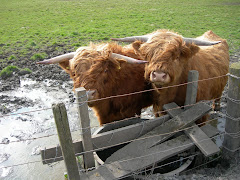Many of the fly angler that attend my fly fishing for beginners days want to know the secret to fly selection as many newcomers to the sport view this the most esoteric aspect of fly fishing. There are all sorts of bit and pieces of advice available out there to help you select the right fly to catch fish and a basic knowledge of entomology will always be an advantage. However as a beginner to fly fishing I would recommend that you start by making a selection from your fly box that conforms to silhouette, size and colour in that order. I find that this method gives a reasonable guarantee for success, but not always!
So, despite our best guess using the silhouette, size and colour method, we have failed to rise the fish to our artificial fly. What next? Well the first thing to try in that situation is a change of pattern, say from a classic dry fly (by that I mean a fly that sits right on the surface in imitation of the dun just before it takes the air) to something that sits a little deeper in the surface film. Again this selection should conform to the silhouette, size and colour rule. Patterns that fall in to this second category are the Klinkhammer special or a JT's emerger and are collectively known as emergers. They are basically something that sits a lot lower in the surface film than a classic dry fly, imitating the point in the hatching process that the nymph is leaving its shuck to become a fly just before sits on the surface to dry its wings. During this emergence phase the insect is very venerable as it is not able to fly away.
All that said, there is always the one fish that sits in the margins gently sipping flies but despite your best efforts it continues to feed refusing all that you cast to it. What can we do about getting the right artificial fly to the fish? The method I am about to describe certainly goes a long way to help take the guess work out of the process and was something that I learned for very successful fly fisher that I have had the pleasure of fishing with here in the UK. It is simplicity itself. This method relies on the fact that I now carry a small piece of net in my fishing waistcoat. The net is about 30cm x 15 cm (12' x 6'), so now when I get a tricky fish I stand a casts length below the feeding fish and deploy the net in such a way that the top edge is on or just below the surface. This gives me a good opportunity to examine exactly what is coming downstream in the current. Then with the information I have gleaned from using the net I can then make a much more accurate selection from my fly box and hopefully this will result in success.
I hope you find this information useful and wish you tight lines for your next fishing trip.
About the Author
Frank Williams is a full time professional fly fishing instructor. For more information on the fly fishing for beginners days he organises. Frank Williams also provides fly fishing lessons and casting tuition for fly anglers of all skill levels from beginners to advanced level.
Subscribe to:
Post Comments (Atom)












No comments:
Post a Comment